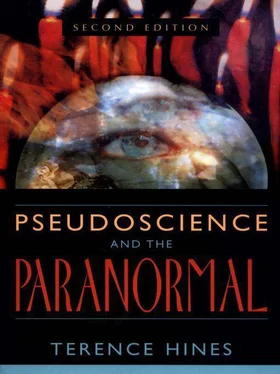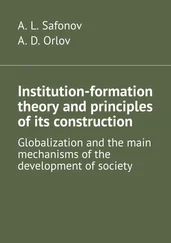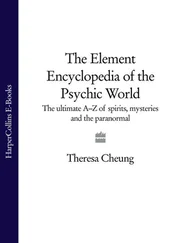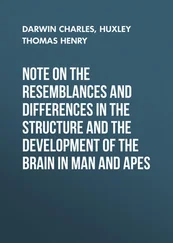What is obviously needed to properly evaluate the claims of dowsers are controlled studies done either in the laboratory or in the field. Vogt and Hyman (1979) review many such studies. None of them showed any evidence that dowsers could find water at an above-chance level. One very large study (Ongley 1948) examined a total of fifty-eight dowsers who claimed to be able to find water. None of them performed at a level above chance. More recent studies have had the same result. Vogt (1952) recorded the comparative numbers of dry and successful wells that had been drilled with and without the advice of dowsers. Of the twenty-nine wells drilled with dowsers’ advice, twenty-four were successful. That sounds good, until one realizes that of the thirty-two wells drilled without dowsers’ advice, twenty-five were successful. There is no statistically significant difference in the relative success rates of wells that were and were not drilled with input from dowsers. Randi (1979–80) tested four Italian dowsers. A pattern of three underground pipes was buried (Fig. 22). Any one of the pipes could have water flowing through it. The dowsers’ task was to trace the route of the one pipe that did have water flowing through it. The dowsers, who didn’t know the route of any of the pipes, were totally unable to divine the route of the one with water in it. Smith (1981–82) tested an Australian dowser named Holmes, who claimed to be able to find both water and gold. The dowser failed to find water. During the testing of his ability to find gold, a significant occurrence took place:
As is traditional in such tests, in full view of Holmes I placed the gold ingot in a box and asked him to see if his powers were working. Instead of going directly to the chosen box (as we expected him to), he walked up and down the row of boxes showing us that he received no reading from the empty boxes. He then mistook the correct box to be the one next to it and promptly divined the wrong box. His wife called out to him to “remember which box it was put in,” but to no avail. (pp. 36–37)
Although it would be easy to laugh at this dowser who can’t even find something when he’s been shown where it is, this incident illustrates an important point. Dowsers’ predictions are based on their beliefs. Holmes believed that the gold was in an empty box and the rod promptly pointed to that empty box. If a dowser believes that water is to be found at a particular location, for whatever reason, the small muscular movements that cause the rod to move become more likely to occur at that location. Thus, both the movement of the rod and the place where those movements occur are internally generated although, because of the nature of the physiology of the kinesthetic system, the dowser will have no conscious appreciation of this fact.
Some dowsers don’t use the traditional rod, but rely on a pendulum, which can be any relatively heavy and small object suspended from a string. A single key will do. The pendulum is usually held at arm’s length and is said to swing back and forth under its own power, with no attempt to induce swinging on the part of the dowser. It swings when the dowser is over water or whatever substance is being searched for. The pendulum can also be used, it is said, to divine the sex of an unborn child: Hold the pendulum over the mother’s belly and it will swing one way for a boy, the other for a girl. The pendulum has also been used to determine the guilt or innocence of an accused person and to reveal all sorts of hidden knowledge.
The pendulum seems to be swinging back and forth under its own power and the one holding it claims, quite honestly, to be making no conscious attempts to influence its movement. In reality, as with the dowsing rod, small arm movements, which are not registered in the brain, are responsible for the pendulum’s movement. This can be demonstrated quite neatly by having the string that suspends the pendulum draped over some stationary object. Movement stops, even though the person is still holding the string and the pendulum is still free to swing, if there really were psychic forces causing its movement. In an interesting experiment, Easton and Shor (1975) further demonstrated the nature of the pendulum’s movement. In one case, subjects could see the pendulum they were holding, in another they couldn’t. Movement was greater when they could see it. Movement was even greater, by a factor of ten, when subjects were asked to imagine that the pendulum was moving, as opposed to when they were asked to imagine that it was not. Finally, if they observed some other type of oscillating motion, this also increased the amount of pendulum movement. None of these effects would be expected if the pendulum’s movement were caused by some psychic force. It was the French scientist Michel-Eugene Chevreul who, in 1812, carried out similar experiments showing that the movement of the pendulum was self-generated by the holder. A full English translation of his 1833 report of those experiments has been published by Spitz and Marcuard (2001). Obviously, dowsing is another example of unconscious movements (Spitz 1997) that are responsible for belief in such phenomena as the ouija board (chapter 3) and facilitated communication.
For years people have been amazed, or at least puzzled, by the ability of people in some “primitive” cultures to walk across beds of hot coals, usually during a religious celebration, without burning their feet. This ability is usually attributed to some vague power of “mind over matter.” It was one Tony Robbins who popularized firewalking in the United States in the 1970s. Robbins, one of numerous self-help gurus based in California, used firewalking as the gimmick in his self help seminars. He persuaded thousands of people to walk across beds of red-hot coals without suffering bums. This was said to show the amazing power of mind over matter. In other words, it was the sheer power of the mind, perhaps a psychic power, that prevented the feet from being burned as the basic laws of physics surely dictate they must.
In reality, it is those very basic laws of physics that prevent people’s feet from being burned while firewalking. The power of the mind has nothing to do with it. Leikind and McCarthy (1985–86) have analyzed the physics of firewalking and find that two well-known physical principles account for the rarity of burned feet. First there is the Leidenfrost effect. This is the effect seen when a drop of water darts about on a hot skillet. Between the skillet and the drop is a layer of steam that insulates the drop from the full heat of the skillet and prevents it from boiling away almost at once. In the firewalking situation, the soles of the feet are often damp, either from sweat caused by nervousness or from water on the grass surrounding the bed of coals. In many of Robbins’s demonstrations of mass firewalking, the grass is hosed down around the bed of coals. The water on the soles provides the layer of steam that helps to insulate the foot from the full heat of the coals.
But the Leidenfrost effect is not sufficient to explain the lack of burning. The material upon which one walks is a very important factor. Consider an example given by Leikind and McCarthy (1985–86). You’re baking something in a pan in the oven at 400 degrees. You open the oven to remove the pan. Naturally, you use a potholder to pick up the pan. If you were to try to pick it up with your bare hands, you’d be burned because it’s at a temperature of 400 degrees—but so is the air in the oven, and that certainly doesn’t burn your hand, even if you leave it in the oven for a minute or so. Why not? The answer is that “different materials at the same temperature contain different amounts of thermal or heat energy and also have different abilities to carry the energy from one place to another” (p. 29). Metal is high in both heat capacity and thermal conductivity, while air is low in both these variables. Thus metal at 400 degrees will burn one badly, while 400-degree air has very little effect. What about the coals one walks on at a Robbins demonstration? Coals are hot (up to 1,200 degrees) but they have low heat capacity and thermal conductivity. Thus, if one walks fairly rapidly over them, no burns will occur. Of course, if one lingers, burns can and do occur. Leikind and McCarthy also note that firewalking as practiced by other cultures involves walking on material (coals or porous stone) that is low in both heat capacity and thermal conductance. It would be interesting to see if believers in the “mind over matter” explanation of firewalking would accept a challenge to walk barefoot over, say, fifty feet of solid metal plates heated to, say, 1000 degrees.
Читать дальше












